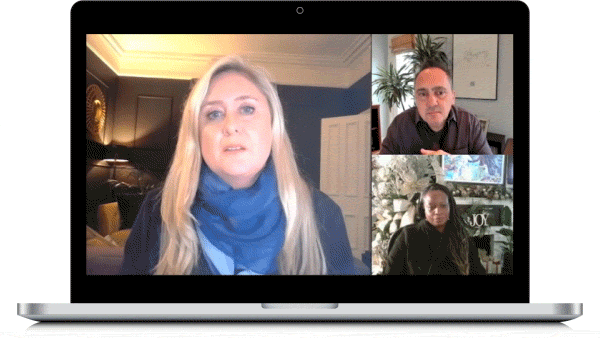Armed with the powerful data that digital event channels provide, event planners’ roles have quickly expanded into the broader marketing ecosystem. Event data provides planners with actionable insights to drive revenue and accomplish business objectives.
This has led to the question: How can you leverage data to improve events in real time and inform your future portfolio?
To help guide you, event industry leaders from Notified, Virtual Events Institute and Money20/20 came together in a special webinar to share strategies you can use to help harness the power of data.
Read on to learn the key takeaways from our webinar and how data can inform event design and performance measurement.
How Can Data Support Your Event?
Event technology supports your goals and objectives from concept to conclusion. This technology provides professionals with data to understand attendees and surface growth opportunities for future events.
At every stage of an event, there is an opportunity to collect or use data. For example, organizers can gather raw data from their attendees at registration like their name, company, title, and more. In an analytics phase, you can then understand who your attendees are, what they might be interested in, and what you can do to make your event unskippable.
Event data has opened up a world of possibilities for marketers to create custom campaigns for micro-communities while speaking to their pain points. It’s crucial to use data to continue to develop these campaigns to match needs and drive value.

Why Is There a Greater Focus On Event Data?
There is an enhanced focus on event data because it gives planners the ability to launch events with confidence. Planners can now utilize data to make informed, strategic decisions.
When presenting an event concept to your leadership team, you can use data to reinforce your ideas and illustrate the value it will bring to your organization.
Before these metrics were available, there was a high risk to hosting events since you could not predict how attendees would respond along with less opportunities to measure ROI. You can now incorporate data into your decision-making process to mitigate these risks.
The past year has changed how individuals are going to attend events. If you want to be the top choice, you must provide a uniquely immersive experience. Therefore, you must use event data to define an event opportunity. Event delivery and lead generation go hand-in-hand, and if you deliver an extraordinary show, you will see an increase in revenue as a result.
How Can You Use Event Data as a Design Tool?
From an event design standpoint, planners can use data to create an unforgettable, premium experience for attendees.
By analyzing data from previous events, planners can gain a glimpse into how their audience, exhibitors, and sponsors will interact at upcoming events. For instance, by measuring and monitoring content sessions, you can properly plan and design future content engagements.
In the planning phase, event data can help identify where planners are in the process of developing an event and help measure performance towards objectives. In forecasting your data from past events, you can identify fluctuations in the data of your upcoming event and plan how to address them. As you continue to gain insights, it’s crucial to keep revamping your strategy to meet your goals and objectives.
When it comes time for the event, real-time engagement measurements provide planners with awareness of the location of attendee engagement and the ability to adjust the programming of their event.
Real-time analytics also help identify event advocates. If you know who your advocates are, you can find a way to get your attendees to market your event for you. You can provide these individuals with unique opportunities to promote your event while incentivizing others to do so as well.
Watch Our On-Demand Events Webinar
Thanks for reading this recap blog! To view the entire discussion and learn more about how to harness the power of event data, watch the full broadcast on demand.
